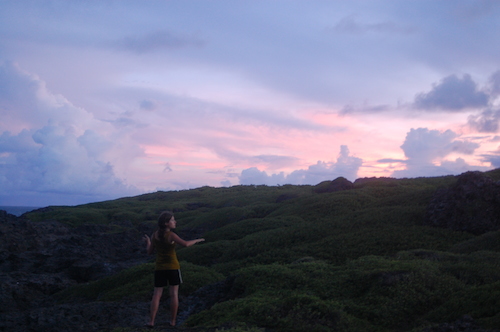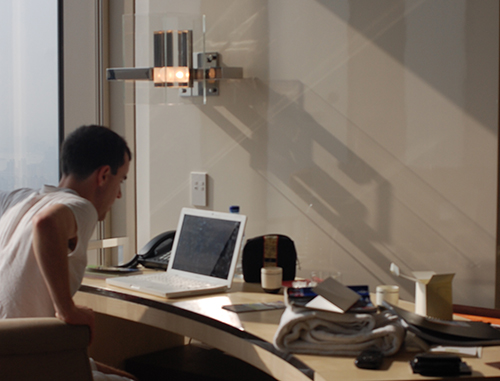5 ways in which working travel is very different from the “gap year”
The other day a reader told me she had saved up for a gap-year of travel. She said that she hadn’t yet decided whether or not to do some remote contract work while traveling or not.
In my opinion, she was right to think decisively about the matter, because there are two very different types of travel she can experience. Traveling with a goal to work as you go is very different than taking a year off to collect incredible travel experiences.
Don’t get me wrong; one is not better and one is not worse…just different. Let’s look at how.
5 ways working-as-you-go travel is different than a gap year:
1.) You can move more quickly during a gap-year.
When you’re trying to work as you go, it’s very much like anyone else’s work life in that you’ll have work-days and off-days. Luckily, you can schedule the work days and off days according to your travel whims, but it often means doubling or even tripling the amount of time you would have ordinarily spent in a place, or just adopting a slow travel pattern in general. You don’t have to see less with the work-as-you-go travel pattern, but you will have to fit the sites into off-days, evenings, lunch-breaks, etc.
With a gap-year, you can let other travel preferences dictate how long you stay in any given destination. You can stay as long as it will take you to see all the sites you had your heart set to see, then move along!
2.) You need to pack more intentionally when working as you go.
When working as you go, you may need more technical supplies than a gap-year person might. If you’re working digitally, you’ll need a reliable laptop, possibly hard-drives. Perhaps you need a better or safer file-storage system. Not to mention if you appear for conference calls or Skype sessions, you may need work-appropriate attire.
For a gap-year, you might still want some sort of internet device, but it could be as simple as an iPod touch or an iPad. Not to mention your wardrobe will be more dictated by the weather than it is by professional expectations.
3.) Traveling with others is harder when you’re working as you go.
When working as you go, the need to spend time working can be hard for other travelers to understand. I can’t count how many times we’ve heard others say to us, “How often are you in [fill in the blank destination]? Just take the day off today and site-see with me!” It’s hard for other travelers to understand that working while you travel mostly requires as many, and sometimes more working hours as a stationary job would. Or it is hard for them to understand that your travel is sustained by the hours spent not site-seeing. So by saying no to the activities of the day, you are actually making it possible to say yes to the activities of another day.
Also the pace of a vacationer is different than the pace of a work-as-you-go-traveler, as mentioned in the first point. So when we have traveled with friends on their vacation time, we’ve gone at a faster pace than we’re used to and thus, we have needed to skip things. On our own time, we may spend 7 days in an area so that we can work for 5 of them and site-see for two. But with vacationing friends who only have so many vacation days, we may spend 3 days in a place, requiring us to fit site-seeing into evenings or lunch-breaks.
During a gap year, it is much easier to be flexible with your pace or site-seeing preferences. Therefore, it’s easier to travel with others and accommodate whatever pace they’re after. That is one of my favorite parts of gap-year styled travel. You can say yes to any excursion that suits your fancy or your budget without any kind of thought towards whether or not you should be working instead.
4.) How you choose a hotel changes.
When working as you go, your hotel decisions might need to include stricter preferences than gap-year travel. For instance we’ve talked about digital work a lot. Indeed, you may need to assure you’ve got a strong internet connection, free or affordable internet, and a space in which you can spend 8 hours working. Unfortunately this sometimes eliminates hostels as an option.
During a gap-year, you may be much more flexible when it comes to accommodation. In our gap-year travel we spent many more nights in hostels and homes-stays than we do now. We tried to find ways to access internet maybe once a week or so, but it was not something we felt we needed every day. Now, we fall behind in our work-load if we go more than a day without internet.
5.) During a gap-year that has a defined end, you may feel less pressure to stay connected with friends and family from home.
Working as you go often means that there is not necessarily an end in sight. For instance my husband and I are full-time travelers so there is no set-time for when we’ll “go back home.” Because of this, I feel a greater need to connect with home on a regular basis. I try to stay in touch with my family members ever week or two.
During our gap-year on the other hand, I had an idea of when we would be returning to our friends and family. This made me feel a little less discouraged by long gaps without communication. At that time Skype was our only option for calling home for free, but we rarely had strong enough internet connection for a good Skype call. But I was reassured by the thought that I could tell my family and friends all about my travel when we returned home at the end of the year.
Now we’ve discussed 5 ways in which gap-year travel and work-as-you-go travel are very different. But in the end, either style of travel is going to require money. Either money you’ve saved, or money you make as you go. How much money depends on how you want to travel and is going to be a little bit different for everyone. But if you want a ball-park figure of what your travel budget can be using miles and points to help buffer that cost, I recommend jumping over to my stats page to see exactly how much it costs for us to live nomadically.



Category: Backpacking, On The Road, Working Abroad